Antioxidants and Prostate Cancer: A Comprehensive Review
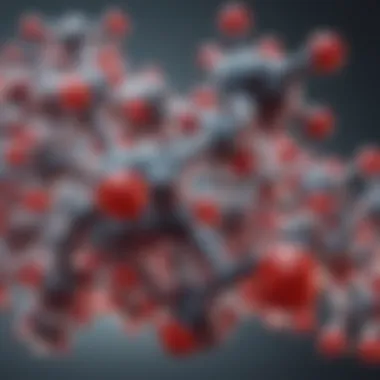
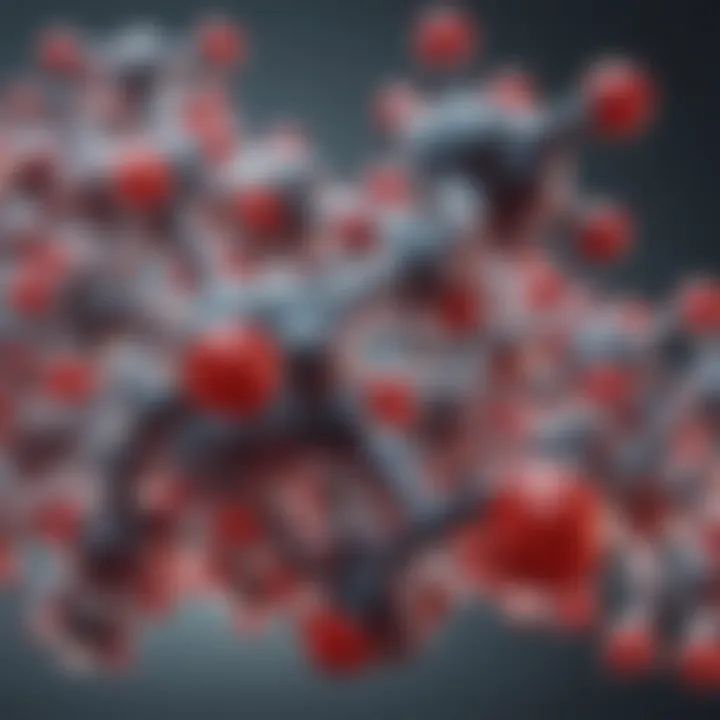
Overview of Research Topic
Brief Background and Context
Antioxidants have long been studied for their potential protective roles against a variety of diseases, including cancer. The prostate, an important gland in the male reproductive system, has been the focus of research to understand how oxidative stress influences cancer development. Oxidative stress occurs when there is an imbalance between free radicals and antioxidants in the body. Free radicals are unstable molecules that can cause damage to cellular structures, leading to inflammation and potentially cancer. As one of the most prevalent types of cancer among men, prostate cancer warrants a thorough examination of the relationship between antioxidants and the disease.
Importance in Current Scientific Landscape
The exploration of the antioxidant-prostate cancer link is gaining traction within the scientific community. Recent research highlights not only the potential for antioxidants to combat oxidative stress but also their varying effectiveness depending on source, type, and individual metabolic response. Investigating how antioxidants might fit into dietary or supplemental strategies for prostate cancer prevention is critical. Furthermore, an evolving understanding of cancer biology necessitates a nuanced approach to the discussion, especially considering the complexities of individual responses to dietary changes and supplements.
Methodology
Research Design and Approach
This analysis draws from a systematic review of existing scientific literature to synthesize diverse findings on antioxidants and prostate cancer. A critical examination of both clinical studies and epidemiological research helps shed light on the efficacy and potential limitations of antioxidants in cancer prevention and management. By employing a mixed-methods approach, incorporating qualitative insights along with quantitative data, the research aims to provide a comprehensive overview that is both informative and precise.
Data Collection Techniques
Data was gathered from various scientific databases, including PubMed and Scopus, and included peer-reviewed articles, clinical trial data, and meta-analyses. These studies were selected based on their relevance to prostate cancer and antioxidant research, ensuring a robust framework for understanding the topic.
Additionally, interviews with healthcare professionals and nutritionists offered practical perspectives on dietary sources of antioxidants, enriching the analysis with real-world applicability. The information was then categorized to identify patterns, levels of evidence, and any ambiguities that require further investigation.
"The relationship between antioxidants and prostate cancer is not black and white, but rather a spectrum of interactions that merits thorough exploration."
Through this methodology, the article strives to delineate the nuanced interplay between antioxidants and prostate cancer, paving the way for future studies and clinical applications.
Prelims to Prostate Cancer
Understanding prostate cancer is a vital starting point in evaluating the potential impacts of antioxidants on this prevalent disease. Prostate cancer, a malignancy in the prostate gland, is a condition that many men face as they age. The importance of this discussion lies in the fact that prostate cancer is not just a single entity; it encompasses various forms, each with distinct characteristics and implications for treatment. Knowledge about its biological underpinnings, how it develops, and the factors contributing to its prevalence gives individuals a better foundation for understanding how lifestyle and diet might play a role in management and prevention.
In recent years, an increasing amount of research has emphasized a connection between dietary choices and cancer risk. This intersection of nutrition and oncology introduces intriguing possibilities about how antioxidants may mitigate dangers associated with oxidative stress, which is recognized for its role in the evolution of cancerous cells. A nuanced look into prostate cancer invites us to explore not just the disease itself but also potential avenues for intervention, thereby making the topic all the more relevant.
Understanding Prostate Cancer
Prostate cancer arises from changes in the prostate cells, leading to uncontrollable growth. The prostate is a small gland found below the bladder that aids in producing seminal fluid. Cells can multiply uncontrollably due to genetic mutations caused by various factors, including environmental influences, age, and lifestyle. As these abnormal cells accumulate, they form what we describe as tumors. Not every tumor is aggressive; some may grow very slowly and require minimal intervention, while others progress rapidly, necessitating immediate treatment.
At its core, understanding how prostate cancer develops isn’t just about the disease itself, but also about realizing the role that factors like inflammation, hormonal fluctuations, and cellular repair mechanisms play in its initiation and progression. Many researchers continue to investigate whether antioxidant compounds could impact these processes positively.
Prevalence and Risk Factors
The prevalence of prostate cancer presents a stark reality to the male population, with studies indicating that about one in nine men will be diagnosed in their lifetime. The risk escalates with age; most cases are found in men over 65. However, age isn't the sole determinant. Other critical factors include:
- Family History: Having a father or brother with prostate cancer significantly increases a man’s risk.
- Genetic Factors: Some genetic mutations, particularly those associated with BRCA1 and BRCA2 genes, correlate with higher risks.
- Ethnicity: Research suggests African-American men have a higher incidence and mortality rate compared to other groups.
- Diet and Lifestyle: There’s ongoing discussion about how dietary habits, including fat intake and consumption of certain vitamins, can affect risk.
Underpinning these risk factors is the role of oxidative stress and inflammation—areas where antioxidants may have a preventive influence worth exploring.
The Role of Nutrition in Cancer Development
Nutrition often surfaces in cancer research discussions as an influencing factor that can either foster or hinder tumor development. Certain foods harbor beneficial compounds that might influence oxidative stress, inflammation, and cellular growth, all crucial in cancer biology. Antioxidants, found abundantly in fruits, vegetables, nuts, and seeds, are believed to protect the body from cellular damage caused by free radicals. These free radicals are unstable molecules that can lead to oxidative stress if not neutralized by sufficient antioxidants.
Key nutritional points worth noting include:
- Fruits and Vegetables: Rich in vitamins C and E, carotenoids, and flavonoids, which are known for their antioxidant properties.
- Healthy Fats: Foods like fish, nuts, and olive oil may also offer protective benefits through their fatty acids.
- Whole Grains: These provide essential nutrients and can help reduce overall cancer risk.
Dietary patterns rich in these components may offer a buffer against the oxidative processes implicated in cancer development. For prostate cancer specifically, a thoughtful diet could potentially serve as part of a broader strategy in prevention and treatment.
"Nutrition is a powerful tool not just for health maintenance but as a frontline defense against diseases, including cancer."
In summary, the intricate narrative surrounding prostate cancer encompasses a multitude of factors—from biological mechanisms to lifestyle choices. Understanding this complex interplay is essential for more effective prevention strategies and interventions, paving the way for a deeper investigation into the role of antioxidants in prostate cancer.
Antioxidants: A Brief Overview
Antioxidants play a critical role in health and disease, particularly in the context of prostate cancer. They are compounds that inhibit oxidation and neutralize free radicals, which can cause cellular damage. Understanding antioxidants is essential because, in the arena of prostate cancer, these substances can potentially alter disease progression and influence treatment outcomes.
These compounds are not merely nutrients; they encompass a variety of chemical substances found in food or available as supplements. Their functions extend to protecting cells, enhancing immune responses, and modulating inflammation. Therefore, exploring antioxidants offers valuable insights into prevention strategies and treatments for prostate cancer.
Definition and Mechanism of Action
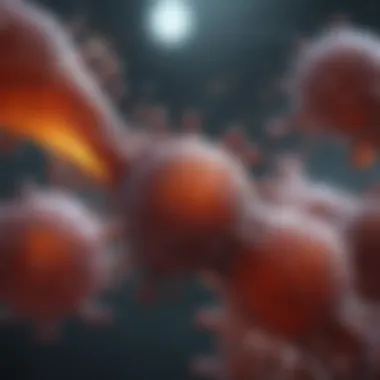
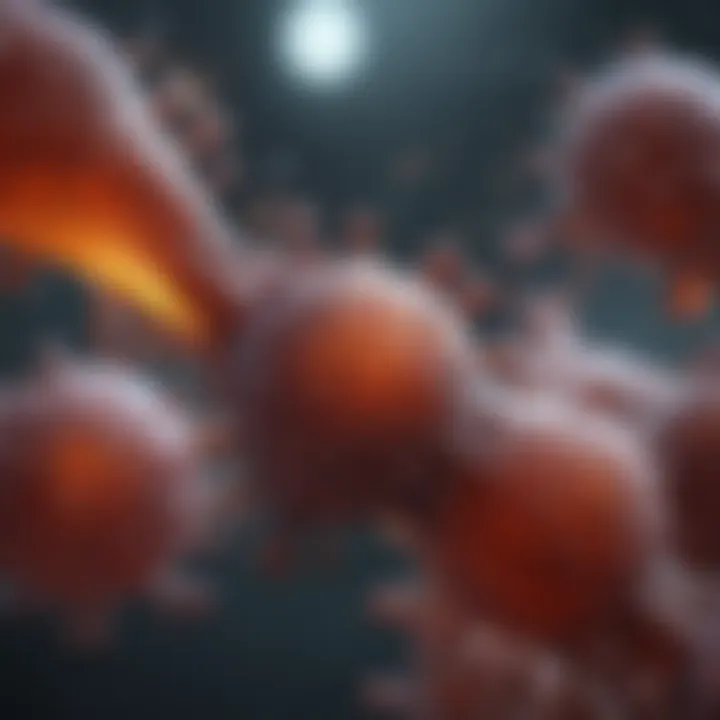
Antioxidants are substances that lend electrons to free radicals, rendering them stable and less reactive. By doing so, they thwart oxidative stress, a condition marked by an excess of free radicals in the body. Oxidative stress can lead to DNA mutations and has been implicated in the development of many types of cancer, including prostate cancer.
In detail, antioxidants work by a variety of mechanisms:
- Scavenging free radicals: They directly neutralize free radicals, preventing damage to cellular components.
- Metal chelation: By binding metallic ions that catalyze the production of free radicals, antioxidants help minimize their generation.
- Regeneration: Some antioxidants can regenerate themselves after neutralizing free radicals, perpetuating their protective effects.
Types of Antioxidants
There are three primary types of antioxidants:
Natural Antioxidants
Natural antioxidants are derived from whole foods, particularly fruits and vegetables. Their bioavailability contributes significantly to their efficacy. These antioxidants, such as vitamin C, vitamin E, and beta-carotene, are well-recognized for combating oxidative stress. What sets them apart is their immediate accessibility—they come alongside an array of nutritional benefits.
One unique feature lies in their synergistic effects where multiple antioxidants together can offer enhanced protection than any single one on its own. However, their potency can be largely influenced by factors such as preparation methods and cooking techniques, making them variable in bioavailability.
Synthetic Antioxidants
Synthetic antioxidants are manufactured for their properties to scavenge free radicals. Examples include butylated hydroxyanisole (BHA) and butylated hydroxytoluene (BHT). They are often utilized in food preservation and as supplements due to their stability and effectiveness.
A distinctive characteristic of synthetic antioxidants is their standardized potency. Unlike natural counterparts, you can quantify doses. However, concerns over long-term health effects and toxicity have emerged, leading to debates among health professionals about their safety in daily consumption.
Enzymatic Antioxidants
Enzymatic antioxidants like superoxide dismutase, catalase, and glutathione peroxidase are produced in the body and serve as primary defense mechanisms against oxidative stress. Their key feature is that they assist in detoxifying reactive oxygen species before they can damage cellular components.
The advantage of enzymatic antioxidants is that they are inherently regulated by the body. Thus, deficiencies can lead to elevated oxidative stress, underscoring the importance of supporting these enzymatic processes through diet and lifestyle. However, reliance solely on these endogenous antioxidants may not always provide comprehensive protection, necessitating dietary sources as support.
Sources of Antioxidants
Understanding sources of antioxidants is crucial, as it ties to lifestyle choices that may mitigate cancer risks. Here’s a synthesis of the major sources:
Fruits and Vegetables
Fruits and vegetables are rich in various antioxidants, particularly vitamins C and E, flavonoids, and carotenoids. Their vibrant colors often indicate the presence of these health-promoting compounds. Eating a range of these foods has been linked to a lower risk of prostate cancer due to their anti-inflammatory properties and ability to combat oxidative damage.
The unique advantage here is variety; incorporating a rainbow of colors can assure a wider array of nutrients. However, the downside can be accessibility or preference, as some may not find certain fruits and veggies palatable, leading to inconsistent dietary habits.
Nuts and Seeds
Nuts and seeds like walnuts, almonds, and flaxseeds pack a hefty antioxidant punch along with healthy fats and fiber. They are renowned for their heart-healthy properties and may help reduce inflammation.
Their high content of vitamin E is a significant benefit, and they are convenient to include in the diet. However, they are calorie-dense, so portion control is essential to avoid unwanted weight gain.
Herbs and Spices
Certain herbs and spices are incredibly potent in antioxidants. For example, turmeric contains curcumin, renowned for its anti-inflammatory and antioxidant properties. Similarly, cinnamon and oregano show promising benefits in cellular protection.
They are typically low in calories and can easily be incorporated into diets, providing flavor as well as health benefits. The only drawback is that their effects can vary greatly based on preparation and serving size, which can influence effectiveness beyond culinary use.
Oxidative Stress and Cancer Biology
The relationship between oxidative stress and cancer biology has become pivotal in understanding the progression of diseases like prostate cancer. At its core, oxidative stress refers to an imbalance between free radical production and the body’s ability to detoxify these reactive byproducts. This section seeks to elucidate the intricacies of oxidative stress, how it plays a crucial role in carcinogenesis, and the dynamic interaction between oxidative species and antioxidants.
The Concept of Oxidative Stress
Oxidative stress occurs when there’s a surge in free radicals in the body, causing damage to cells and tissues. Free radicals are basically molecules that have unpaired electrons, making them highly reactive with other cellular structures. These radicals can originate from various sources, including environmental pollutants, radiation, and even normal metabolic processes. When the body is unable to neutralize these free radicals with sufficient antioxidants, damage might accumulate over time.
Here are some consequences of oxidative stress:
- DNA Damage: Reactive oxygen species can attack DNA, leading to mutations that may initiate cancer.
- Protein Modification: Proteins can also undergo modifications that impact their function, potentially disturbing cellular communication and growth signals.
- Lipid Peroxidation: This process damages cell membranes, contributing to cell death and inflammation.
Thus, oxidative stress is not merely a side effect but a significant player in the initiation and promotion of cancer, particularly prostate cancer.
Mechanisms of Cancer Development via Oxidative Stress
The mechanisms by which oxidative stress leads to cancer are complex and multifaceted. When free radicals inflict damage, the cellular repair systems attempt to fix the harm. However, repeated or severe damage can overwhelm these repair mechanisms.
Some key mechanisms include:


- Mutagenesis: Persistent oxidative stress can cause mutations in crucial genes that regulate cell cycle and apoptosis. For example, when DNA becomes mutated, oncogenes may be activated while tumor suppressor genes like p53 can be inhibited, tipping the balance towards uncontrolled cell proliferation.
- Inflammation: Oxidative stress is closely linked to inflammatory responses, creating an environment conducive to cancer development. Inflammation leads to the release of more free radicals, which can exacerbate potential damage.
- Signal Transduction Disruption: Free radicals can affect various signaling pathways, such as those involving the mitogen-activated protein kinases (MAPKs), resulting in altered cellular behaviors that favor survival and growth of cancer cells.
The Interplay Between Oxidative Stress and Antioxidants
Understanding the interplay between oxidative stress and antioxidants is essential for elucidating their role in cancer biology and treatment strategies. Antioxidants can neutralize free radicals, thus offering protection against oxidative damage. The body naturally synthesizes some antioxidants, but dietary sources also play a crucial role in maintaining oxidative balance.
"Antioxidants are the body's natural defense, not just a supplement to the diet."
However, it's critical to consider that while antioxidants can prevent damage, their role in cancer biology isn't entirely one-dimensional. For instance, in a complex tumor environment, antioxidants can also affect the growth and survival of cancer cells. High amounts of certain antioxidants might interfere with chemotherapy drugs' effectiveness by giving cancer cells a shield against oxidative stress induced by these treatments.
In summary, while oxidative stress significantly contributes to the development of prostate cancer, the relationship with antioxidants is nuanced. Both can influence cancer cells in multiple ways, making further research critical in determining how best to harness antioxidants in cancer prevention and treatment strategies.
Research on Antioxidants and Prostate Cancer
The exploration of antioxidants in relation to prostate cancer is both a crucial and evolving area of study. Understanding the interplay between oxidative stress, free radicals, and cancer progression opens doors to innovative prevention and treatment strategies. The significance of this field lies not just in the theoretical understanding but also in practical applications that might alter the course of cancer care. As we delve into the research surrounding this topic, it is essential to acknowledge a few contextual elements that enhance our appreciation for the broad scope of investigation:
- Scientific Inquiry: Research in this area spans epidemiological studies, clinical trials, and meta-analyses, each contributing layers of insight that help paint a fuller picture of antioxidant roles.
- Public Health Implications: The findings from these studies bear consequences that could guide dietary recommendations and public health policies aimed at reducing prostate cancer incidence.
- Tailored Treatments: As research develops, there is potential for personalizing cancer treatment protocols through dietary and supplement-based interventions.
Epidemiological Studies
Epidemiological studies have been pivotal in establishing a link between dietary antioxidants and prostate cancer risk. These large-scale population studies analyze data from diverse cohorts to identify correlations between antioxidant intake and cancer prevalence. For instance, researchers have often focused on specific fruits and vegetables known for their high antioxidant content, such as tomatoes which contain lycopene, and berries that are rich in flavonoids.
This kind of research brings to the forefront several key considerations:
- Associative Evidence: A plethora of studies suggest that higher consumption of dietary antioxidants is often associated with a reduced risk of prostate cancer.
- Geographical Variations: Variances in dietary habits across different populations illuminate how lifestyle choices can influence cancer development. Notably, men in regions with higher fruit and vegetable intake appear to face lower prostate cancer rates.
- Limitations: Despite these findings, epidemiological studies often face challenges like confounding variables. Factors such as lifestyle, genetics, and other dietary components can cloud results, requiring cautious interpretation.
Clinical Trials
Clinical trials represent another cornerstone of research in this field, where the effects of specific antioxidant compounds are tested in controlled environments. Different trials have sought to measure not just the potential preventive outcomes of antioxidants, but also their ability to influence cancer progression in diagnosed patients.
Key outcomes from clinical research include:
- Specific Compound Effects: Trials have focused on popular antioxidants like vitamin E and selenium, examining their efficacy in reducing prostate cancer risk and recurrence. However, results have sometimes been conflicting, which urges a careful approach to supplementation.
- Participant Diversity: Clinical trials vary dramatically in their participant demographics, which must be considered when analyzing results. The response to antioxidants may differ vastly among groups based on genetic predispositions or environmental factors.
- Research Standards: The rigor applied in clinical trials helps validate theories and hypotheses laid out by observational studies, thus creating a more robust understanding of how antioxidants can fit into cancer prevention frameworks.
Meta-Analyses
Meta-analyses unite data from various studies, providing a more comprehensive lens through which to evaluate the evidence on antioxidants and prostate cancer. They synthesize findings across multiple trials and studies, addressing the variability in results and presenting a consolidated view of existing data.
In the realm of antioxidants and prostate cancer, here are some relevant insights:
- Data Aggregation: By compiling data, meta-analyses enhance the statistical power of studies, revealing trends and associations that individual studies might miss due to sample size limitations.
- Inconsistencies and Bias: These analyses also flag inconsistencies, potentially revealing biases in original studies, cautioning that not all antioxidant effects are universally applicable or beneficial.
- Guidance for Future Research: Findings from meta-analyses can inform future research directions, pinpointing areas lacking data or highlighting the need for more specific investigation into antioxidant class efficacy.
The amalgamation of these research avenues underscores the complexity of the interaction between antioxidants and prostate cancer, prompting continuous inquiry into their roles, mechanisms, and implications in the realm of cancer treatment and prevention. As the scientific community advances, the hope is for clear guidelines and recommendations based on robust evidence that could significantly help in combating prostate cancer.
The Role of Dietary Antioxidants
Understanding the role of dietary antioxidants in the context of prostate cancer is crucial. Antioxidants are compounds that combat oxidative stress, which is linked to numerous health issues, including cancer. By acting against harmful free radicals, these dietary components can potentially lower the risk of cancer development, particularly in the prostate.
Fruits and Vegetables in Prostate Cancer Prevention
Fruits and vegetables are standout sources of dietary antioxidants. Their vibrant colors often signal a rich supply of these protective compounds. For instance, tomatoes are abundant in lycopene, a powerful antioxidant that has garnered attention for its potential anti-cancer properties. Some studies indicate that men who consume higher amounts of lycopene may have a reduced risk of prostate cancer.
Moreover, cruciferous vegetables like broccoli and cauliflower contain glucosinolates, which have shown promise in cancer prevention. It’s not just about eating any vegetables, though; the method of preparation can make a world of difference. Steaming these veggies might preserve their antioxidant levels better than boiling. So, when planning meals, the cooking technique matters as much as the type and quantity of produce.
Beneficial Effects of Nuts and Seeds
Nuts and seeds also play a significant part in bolstering the antioxidant diet. For example, walnuts are considered heroes in the nut kingdom. Their high polyphenol content could contribute to slowing down tumor growth. Likewise, some studies suggest that the omega-3 fatty acids found in flaxseeds may have some protective effects against prostate cancer progression.
It's worth noting that moderation is key. Nuts, while packed with healthy fats, are calorically dense and should be consumed within reasonable limits to avoid unwanted weight gain, which could counteract the benefits of eating healthy.
Herbs and Spices: A Potential Ally
Don't underestimate herbs and spices in the quest for antioxidant benefits. Turmeric, famed for its active compound curcumin, might be a potential ally in the fight against cancer. Curcumin has been documented to have anti-inflammatory and antioxidant properties that could aid in prostate health. Similarly, garlic is another powerhouse; its allicin content may provide protective benefits, too.
Incorporating these herbs and spices into daily meals doesn’t require any culinary wizardry. A sprinkle here or a dash there in everyday cooking can easily enhance both flavor and health benefits. So, not only are they tasty, but they may also prove vital in the ongoing strategy against prostate cancer.
"A diet rich in antioxidants may play a pivotal role in prostate cancer prevention and management, keeping health at the forefront."
In summary, the inclusion of fruits, vegetables, nuts, seeds, herbs, and spices provides an array of antioxidants that could positively influence prostate health. This dietary approach not just offers a simple yet effective strategy, but it emphasizes a holistic view of cancer prevention.
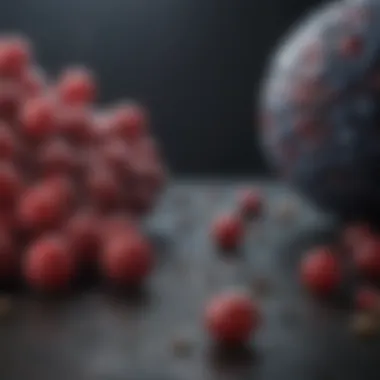
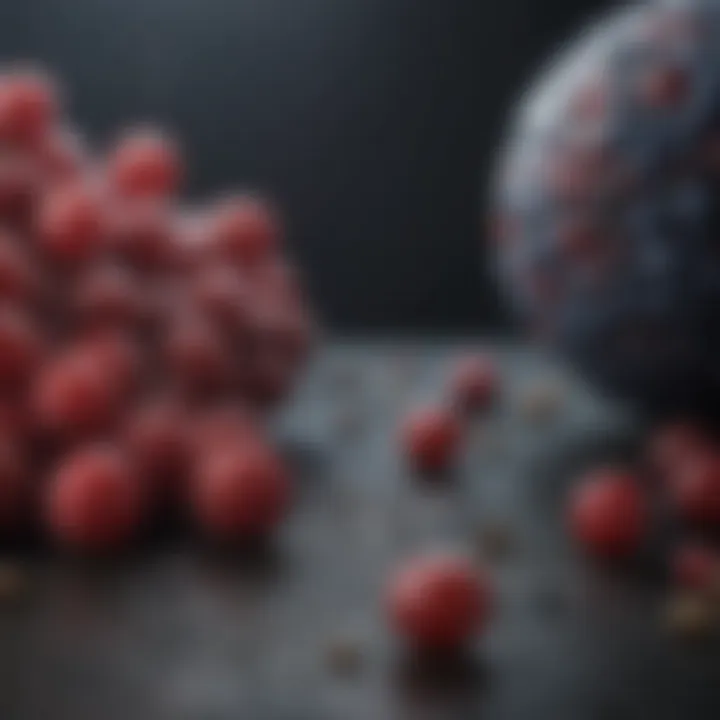
Antioxidant Supplementation: Pros and Cons
Antioxidant supplementation has emerged as a significant discussion point in the context of prostate cancer. Many individuals grappling with health concerns often turn to supplements with the hope of fortifying their bodies against diseases. Understanding both the advantages and potential pitfalls of these supplements is crucial, especially regarding prostate cancer, where oxidative stress plays a pivotal role in disease progression.
Potential Benefits of Antioxidant Supplements
There are several reasons why antioxidant supplements can be beneficial, particularly for individuals concerned with prostate cancer. Some of these benefits include:
- Reduction in Oxidative Stress: Antioxidants can help neutralize free radicals that may contribute to cellular damage. This cellular protection is invaluable, given that oxidative stress is a known factor in various cancerous developments.
- Immune System Support: Certain antioxidants, like vitamin C and E, have been shown to bolster the immune system. A strong immune response could support the body in fighting off the early signs of cancer.
- Potential Preventive Effects: Some studies suggest that antioxidants may aid in reducing the incidence of prostate cancer, although results vary. For example, selenium, a powerful antioxidant, has been linked to lower rates of prostate issues in some populations.
- Enhancing Quality of Life: For those already diagnosed, antioxidants might help in alleviating symptoms related to prostate cancer treatments, thus improving overall quality of life.
It’s important for individuals interested in these supplements to consult with healthcare professionals, ensuring that the approach fits their unique needs and medical circumstances.
Risks and Limitations of High-Dose Antioxidants
While there are potential benefits, there are also risks associated with high-dose antioxidant supplementation. Some notable concerns include:
- Interference with Cancer Therapies: Some antioxidants may hinder the effects of chemotherapy and radiation therapy. For instance, studies revealed that high doses of vitamin E could reduce the effectiveness of certain cancer treatments, potentially counteracting their benefits.
- Toxicity with Overconsumption: Consuming high doses of specific antioxidants could lead to adverse effects. For example, excessive intake of beta-carotene has been linked to an increased risk of lung cancer in smokers.
- Inconsistent Research Results: The efficacy and safety of antioxidant supplements can be quite varied. Clinical trials often yield mixed results, making it challenging to derive universal guidelines for supplementation. Hence, some individuals may inadvertently place themselves at risk.
- Nutritional Imbalance: Sole focus on supplements might lead to neglecting natural sources of antioxidants found in food. Relying heavily on pills may create dietary gaps that a balanced diet could otherwise fill.
Natural vs. Synthetic Antioxidants
When considering antioxidant supplementation, an important distinction exists between natural and synthetic sources. Each type carries its considerations:
- Natural Antioxidants: These come from whole foods such as fruits (like berries), vegetables (such as spinach), and nuts (like walnuts). They tend to offer a wider range of health benefits, likely due to their complex interactions with various phytonutrients. Furthermore, natural sources often integrate into a regular diet more easily without posing significant risks of overdose.
- Synthetic Antioxidants: These are manufactured to mimic the structure and function of their natural counterparts. While they can also provide benefits, there are concerns surrounding their long-term safety and effectiveness. In some cases, synthetic forms may not be metabolized the same way as those found naturally in food, leading to inefficient benefits or unexpected side effects.
Future Directions in Research
As the field of cancer research continues to evolve, understanding the dynamic interplay between antioxidants and prostate cancer becomes increasingly vital. Ongoing studies are addressing numerous questions about how different antioxidant compounds influence cancer biology, which could pave the way for innovative prevention and treatment strategies. This section highlights some significant elements in future research regarding antioxidants and prostate cancer, emphasizing both benefits and necessary considerations.
Emerging Antioxidant Compounds
A burgeoning area of study is the identification of new antioxidant compounds that show promise in combating prostate cancer. Emerging antioxidants, such as astaxanthin found in certain algae or carotenoids in various fruits and vegetables, are under intense scrutiny. Researchers are exploring how these compounds can neutralize free radicals or modulate cellular signaling pathways involved in cancer progression. Recent studies have indicated that compounds like curcumin and resveratrol exhibit not only antioxidant properties but also potential anti-inflammatory effects that may inhibit tumor growth.
Moreover, the synergy between multiple antioxidative agents is a topic of interest. The notion of using a blend of these compounds rather than isolated supplements could enhance the efficacy of treatment protocols.
- Key Research Areas:
- Investigating the efficacy of novel antioxidant compounds.
- Exploring synergistic effects in combination with traditional therapies.
Integrative Approaches to Cancer Prevention
Integrative approaches in addressing prostate cancer focus on combining conventional medical treatments with complementary therapies, including dietary modifications and physical health strategies. This multidisciplinary strategy allows for a more holistic understanding of how antioxidants interact with cancer treatments. For instance, some studies emphasize that incorporating dietary sources of antioxidants, like berries or tomatoes, can support overall health and may even improve the outcomes of chemotherapy and radiotherapy.
Furthermore, integrative medicine seeks to boost the immune system's ability to combat cancer by emphasizing a balanced lifestyle, which includes regular exercise and stress management techniques alongside antioxidant-rich nutrition. By taking this holistic view, researchers might uncover ways antioxidants assist conventional therapies, providing bespoke solutions tailored to individual patients' needs.
The Role of Personalized Nutrition
Personalized nutrition is gaining traction as a distinctive approach in cancer prevention. It considers individual variations, including genetics, metabolism, and existing health conditions, to recommend dietary patterns unique to each patient. The role of antioxidants within personalized nutrition is crucial because not everyone's body reacts similarly to dietary patterns.
By utilizing genetic information and biomarkers, healthcare professionals can craft diets high in specific antioxidants that align with a patient's profile, thus maximizing their protective effects against prostate cancer. For instance, someone with a higher risk of prostate cancer might benefit from a tailored regimen rich in selenium and lycopene, compounds shown to have protective properties.
In summary, future research into antioxidants and prostate cancer is set against a backdrop of promising developments. Emerging compounds stand to reshape our understanding of cancer biology, while integrative and personalized approaches may redefine preventive and therapeutic strategies. As researchers continue their endeavors, the hope is that clearer guidelines will emerge, fostering better outcomes in preventing and managing prostate cancer.
Epilogue
The topic of antioxidants in relation to prostate cancer is crucial for a multitude of reasons, primarily the interplay between oxidative stress, free radicals, and cellular health. Antioxidants are increasingly recognized for their potential in safeguarding cells from damage, which is vital in the context of cancer prevention and management. When we examine the findings presented throughout this article, it's clear that the narrative surrounding antioxidants is not merely a matter of dietary trends; rather, it necessitates a deeper understanding and critical framing.
Summary of Findings
The analysis provided in this article elucidated several key aspects concerning the role of antioxidants in the context of prostate cancer:
- The relationship between oxidative stress and cancer development was highlighted, illustrating how chronic oxidative damage can lead to cellular transformation.
- Various dietary sources of antioxidants, including fruits, vegetables, nuts, herbs, and spices, were discussed. These foods are not only beneficial on their own but can also work synergistically to bolster the body's defense against potential cancerous changes.
- Research insights were reviewed, from epidemiological studies to clinical trials, providing a spectrum of evidence regarding the efficacy of antioxidants in mitigating prostate cancer risks.
"Understanding the nuanced relationship between diet, antioxidants, and cancer is essential for developing effective prevention strategies."
Practical Implications for Individuals
For individuals striving to maintain their health, particularly those concerned with prostate cancer, the practical takeaways from this discussion are invaluable. Here are several actionable insights:
- Incorporate Diverse Foods: Emphasizing a diet rich in colorful fruits and vegetables can provide a variety of antioxidants. Foods like berries, leafy greens, and tomatoes are excellent choices.
- Choose Whole Foods Over Supplements: While supplements can sometimes offer benefits, they don’t replace the intrinsic values of whole foods. Relying on natural sources ensures a balanced intake of various phytochemicals that work together.
- Regular Monitoring and Consultation: For those at heightened risk, regular consultations with healthcare providers can inform personalized nutrition and supplement strategies.
Call for Continued Research
Given the complexity surrounding antioxidants and prostate cancer, ongoing research remains pivotal. Despite the promising findings so far, several areas warrant further exploration:
- Long-Term Effects of Antioxidant Intake: More studies are needed to understand the long-term implications of dietary antioxidants in prostate cancer prevention.
- Interactions with Other Treatments: Investigating how antioxidants may interact with traditional cancer treatments could provide insights into integrative therapeutic approaches.
- Personalized Nutrition Approaches: As research evolves, a focus on how genetic factors influence individual responses to antioxidants could pave the way for tailored dietary recommendations.



